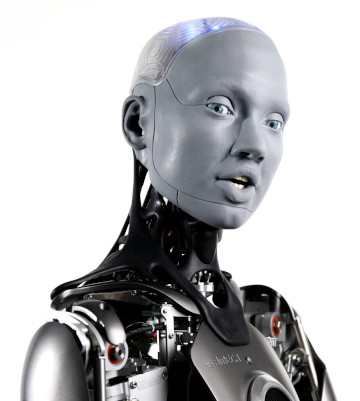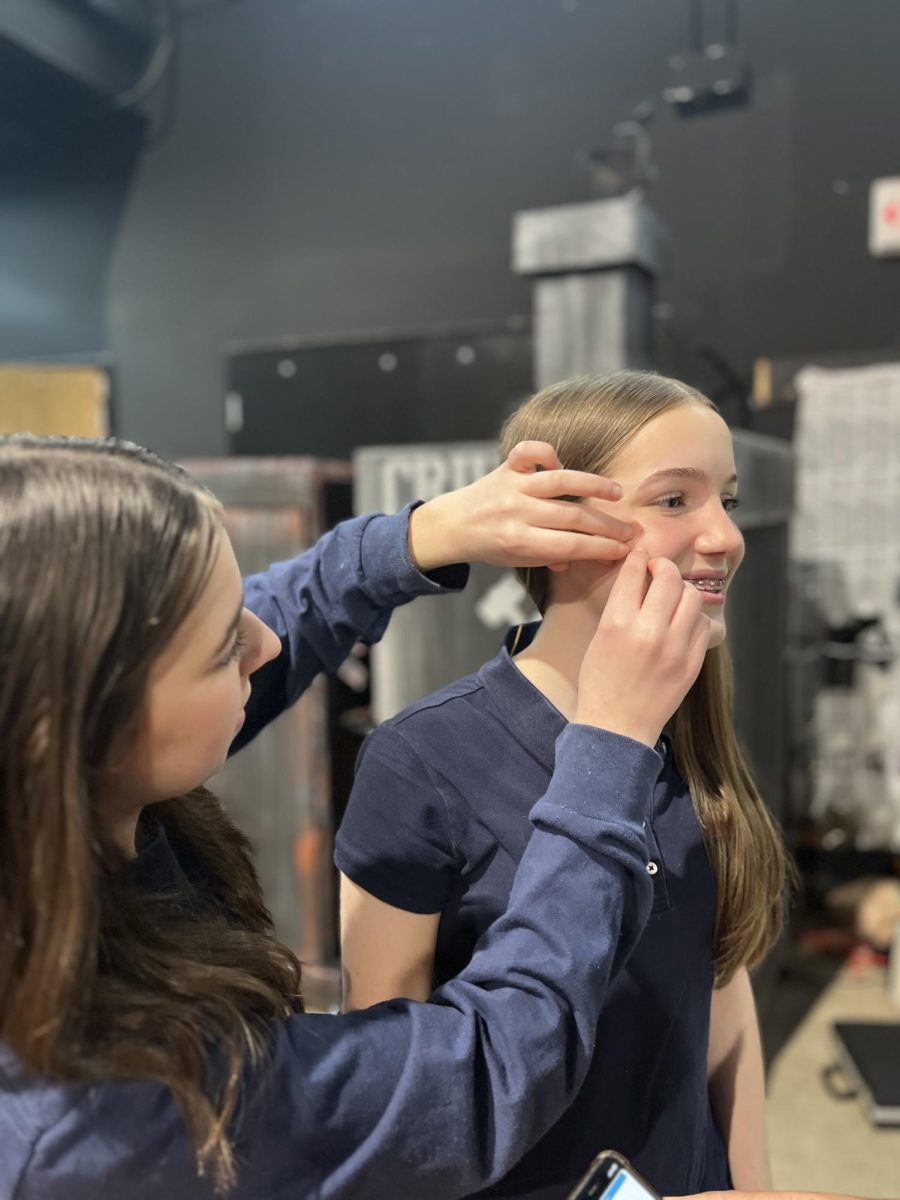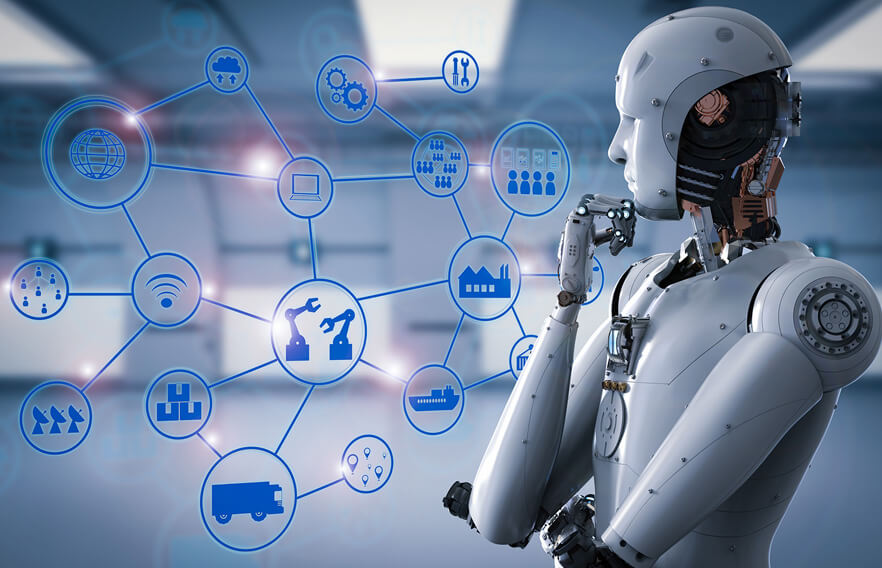Humanoid Robots: To Help or To Harm
March 24, 2023
For over a century, humanity has been fascinated by the idea of another life form to satisfy all areas of need: the robot. Not just a machine with wires and AI programs but a humanoid robot. The question is, do they help or harm?
Imagine this: You’re in the theatres watching M3GAN, a horror film depicting a young girl who lost her parents as she bonds with a humanoid robot, M3GAN, who has become her best friend. You’re captivated by M3GAN’s intelligence, exquisite human-like features, and ability to provide Cady, the young girl, with comfort, joy, and love.
Until things turn dark, M3GAN begins to harm anyone who negatively affects Cady’s life (courtesy of an engineering error). You clinch your seat as M3GAN slaughters person after person. You tell the victim, on screen, “Don’t go through that door!” Soon after, the qualities of M3GAN that once captivated you turn into fear. And as you leave the theater, feeling disturbed, you ask yourself: do humanoid robots help or harm?
Let’s Start with the Positives.
The first humanoid robot was a soldier with a trumpet, made in 1810 by Friedrich Kaufmann in Dresden, Germany, according to The Robotics Academy. A humanoid robot is to resemble a human body in shape. They are used to interact with human tools and environments and for experimental studies.
They’re the most functional in increasing security, command, and control, assisting in education and mobility. Whether you’re waiting in line to get your bag checked, need help in the classroom or home, or need help moving around, humanoid robots can create a safe and hazard-free environment.
On to the Negatives…
On the other hand, humanoid robots cost a substantial amount to make. For example, billionaire Elon Musk’s “Optimus” robot (pictured left) costs $20,000; maintenance costs could vary from $4,000-$10,000 per year! Additional charges associated; you could purchase a 2020 Chevrolet Equinox for less than this! Beyond costs, humanoid robots can be deceptive, giving people the impression that they care about or have emotions that they do not have.
Furthermore, they can delude people into thinking they are more competent or skillful than they are, a trait that could have negative safety consequences. If we naively decide to trust the opinions of a humanoid, we are negatively affecting our psyche and thus hindering ourselves from human interaction.
 Meet Ameca, Your New Best Friend
Meet Ameca, Your New Best Friend
Dubbed ‘the future of humanoid robots’ by Engineered Arts, Ameca is the most advanced human-shaped robot. Ameca can serve as your personal Google, or your conversationist! Created by Cornwall-based firm Engineered Arts, Ameca states that her “creators are always developing my systems, so in the future, I’ll be even more expressive, more dexterous, more autonomous, and more helpful to humanity; I may even have walking legs one day,” Ameca said. She communicates with one of her creators, Supercar Blondie in the Youtube video above.
In a video at the Museum of the Future in Dubai, Ameca even cracks jokes, saying she’s happy being a robot because she “doesn’t age and cracks no wrinkles.” Ameca serves as an example of the possibilities for humanoid robots. Her impeccable engineering, exemplary conversation skills, and endless knowledge captivate robotic scientists and citizens of the world. Would you like to meet the one-of-a-kind Ameca?
My Conclusion
Humanoid robots, such as Ameca, make me optimistic about the future of robotics. On the other hand, the negatives persuade me to believe otherwise. Therefore, I believe humans and humanoids should not coexist.
What if humanoid robots enter the workforce as everyday people? What if they enter the household, serving as your assistant? The world would go in shambles, we would lose jobs, and our families would become increasingly distracted. Most importantly, we’d become too dependent and lazy. If we continue to encourage robotic advances, we are hindering ourselves and the future generation. Ask yourself: Do I want my future child to connect to an artificial human?
Nevertheless, that’s just my opinion. Perhaps there isn’t a clear answer on whether robots help or harm us. Though, we’ll have the answer in the future. I encourage you to form your opinion; do humanoid robots help or harm us?
Bain, Kate. “Meet Ameca, the World’s Most Advanced Humanoid Robot.” Supercar Blondie, 20 Mar. 2023, https://supercarblondie.com/tech/ameca-robot-humanoid/#:~:text=This%20is%20the%20most%20advanced,about%20any%20question%20she’s%20asked.
World, The Scientific. “Benefits of Using Humanoid Robots in Our Daily Life.” The Scientific World – Let’s Have a Moment of Science, Blogger, 4 Jan. 2022, https://www.scientificworldinfo.com/2022/01/benefits-of-using-humanoid-robots-in-our-life.html.
June 13, 2022. “Humanoid Robots Pros and Cons.” RexrothUS, 13 June 2022, https://rexroth-us.com/blog/humanoid-robots-pros-and-cons/#:~:text=The%20downside,do%20not%20in%20fact%20have.
Admin. “History of Robots.” Adelaide Robotics Academy, 11 Nov. 2022, https://www.roboticsacademy.com.au/history-of-robots/#:~:text=The%20first%20humanoid%20robot%20was,Society%20annual%20exhibition%20in%20London.
“Ameca.” Engineered Arts, 12 Jan. 2022, https://www.engineeredarts.co.uk/robot/ameca/.



















































